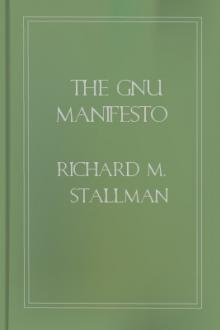Love Story: In The Web of Life Ken Renshaw (the best novels to read TXT) 📖

- Author: Ken Renshaw
Book online «Love Story: In The Web of Life Ken Renshaw (the best novels to read TXT) 📖». Author Ken Renshaw
I U-turned and went back to the center of townand turned onto the only cross street. In the next block, I found afuneral home, the Butte News newspaper, and Courthouse Square,which appeared to be the civic center. In the center of CourthouseSquare, I saw the white courthouse, a Greek Revival Style building,a much smaller version of the Supreme Court Building in WashingtonDC. A granite staircase led up to a portico, at the second storyentrance, a colonnade of four two-story columns supporting atriangular roof, with 1922 engraved above the colonnade. The fourwindows on each side of the portico suggested that one half of thesecond story was the courtroom, and offices were in the other half.I noticed a county office annex added to the back of thecourthouse, a plain building, probably built when the countyoffices overflowed from the courthouse in the 1950s. There was aSheriff's office with a separate entrance in the annex. Two patrolcars were parked outside.
The library sat on one corner of CourthouseSquare, a red brick building, two stories high, with steps going upto the second story main entrance. It looked to be from the era ofthe 1920s, when Carnegie libraries were built.
Next to the courthouse block was a PioneerMuseum with an adjacent park with playground equipment, picnictables, and an old locomotive, apparently from a logging train, atthe side. A granite slab, engraved with eighteen names, standsmemorializing those killed in the earthquake of 1872.
As I looked farther, I saw a white,old–fashioned church with a steeple. It looked like the picturesthat I had seen of churches in Vermont, having a sharp steepleperched on a bell tower in the front, several gabled windows alongthe side.
In the Gold Rush days, Rocky Butte had apopulation of ten thousand or so. It was a booming place provinghotels, saloons, and ladies to absorb the miner's gold. It becamethe county seat during that time. The town burned down twice in the1800s. Now, the sign at the bridge said its population was687.
It didn't take long to see all of RockyButte.
My first stop was about a half mile beyond thechurch at the Sodastroms', the parents of Lucy, the girl who waslost. They lived in a small white house, surrounded by pine trees,with an unpaved driveway to a garage behind the house. A small barnand corral were behind the garage. A dark brown mare, I guessed ithad been Lucy's, grazed, on the spring grass in thecorral.
Ann Sodastrom met me at the door, and Iintroduced myself. Ed who was sitting in a recliner watching TV,got up and introduced himself. Ann was skinny, and looked as thoughshe had lost more weight than she should have. Her print housedresshung on her. Ed was also slight and lean, had a hollow look to hisface and stooped shoulders.
I didn't want to add to their grief bydiscussing the case. I simply introduced myself and gave themassurances that their case would be successful. I asked questionsabout Rocky Butte, the church, what they liked about the area: Imade small talk to get to know them and for them to get comfortablewith me. I left after a polite amount of time.
I went into Bob's Cafe on Main Street to fordinner and gossip. I sat on a swiveling stool at the counter. Theonly other customer was a man with a white beard sitting in a boothreading a paper over his dinner.
A waitress came over, looked me over carefully,and said, “what’ll-y-have?"
She was about fifty, grey haired, wearing apink, starched waitress uniform, the kind with a little tiara-likehat, a kind I had not seen since I was in high school. She had aname badge that said Agnes.
"Can I see a dinner menu?"
"Same menu all day, honey, special tonight ispork chops."
I looked at the bottom of the menu, and itsaid, "Free Wi-Fi for customers."
"You have Wi-Fi," I added.
"We're up-to-date around here," she boasted."We even have cell phone service so visitors won't feeldisconnected. You're not from around here, are you?"
"No, I have a little business at the courthousetomorrow and then I will visit someone up the hill."
"If you are trying to beat a speeding ticket,forget it. Judge Jeremiah Cartright, we call him 'The HangingJudge,' doesn't have much tolerance for speeders. You might end upspending the night in jail."
"Where is the jail?" I asked.
"Over in the basement of the annex at thecourthouse, behind the sheriff's office. The main county jail is upin Pine Mountain, where the county sheriff has his office. Theyneed it more up there with all the tourists and skiers."
"I'll try to keep out of both places. How longhave you lived here, Agnes?"
"All my life. My great-grandfather had a miningclaim here, and my family has come and gone over the years. I wasraised on a farm down the valley. I seem tied to the placesomehow."
In a few minutes, Agnes brought me mydinner.
"You must be the fellow from LA that is stayingover at the River View motel."
I was somewhat taken aback, but then Irealized, in this slow season, before the vacationers arrive,anything was news. Everyone in town probably knew my motelreservation.
'Lesson number one,' I thought.
"That's right," I said. "I'd better get overthere and check in. See you later, Agnes."
I could tell I was being carefully watched as Ileft. As I got in my car, I saw that Agnes was on her cellphone.
'This is like a police state,' I thought.'Except the tyranny comes from the rule of boredom. The trial willgive them something to talk about.'
After dinner, I decided to enjoy a walk on thisfine Sierra evening. The late-day yellow sunlight made the green ofthe pine trees glow as I walked through the woods on what must havebeen a game trail through the brush and manzanita. The forest wasquiet, the birds were having their evening rest, and it wasperfectly still. I smelled the pines and kicked the pinecones lyingin the yellow dirt





Comments (0)